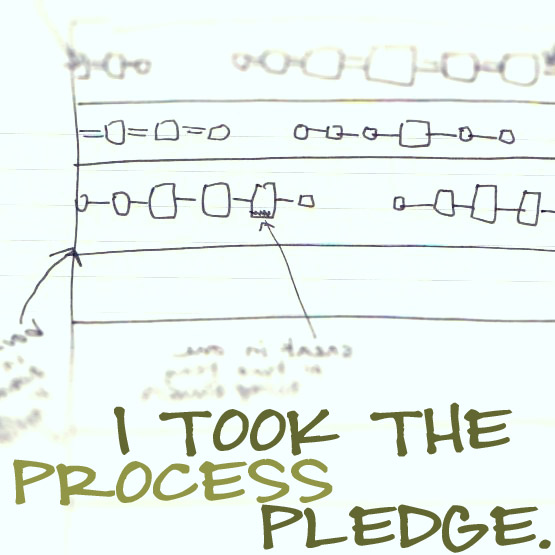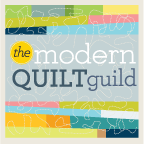One of the very best things about the Gwen Marston Freddy Moran books is that they have, particularly in the second volume, taken some time to point out critical &/or significant design elements. That practice not only gives the reader and student a nice peek into the Freddy and Gwennie design process, it helps inform your own process. Marston and Moran place a high value on the inclusion of unexpected elements, which by confounding expectation, cause our eye to stop and say "hey, what gives??" This forces you to look carefully at the composition, and have a little conversation with the quilt in hand.
A perfect example of this approach is represented in the quilt below:
First, the colours. Not many times in our quilting lives do we finger a schoolbus orange fabric sprinkled with red dots and say "hmmmm, what a fabulous background fabric this would be"! And yet, it works so very well here. In the notes on this quilt, the makers point out the salient design elements: mixing of liberated and traditional (precision) pieced elements, filler strips both pieced and plain, split blocks, unexpected colour shifts in the sawtooth borders. In addition, you can see blocks constructed of both high and low contrast elements ie. stars that stand out from their background fabric, and stars that blend with it; a small twist on the traditional that makes you stop and look around the quilt for similar unexpected elements.
It becomes clear as you examine the quilt that these unexpected, non-conforming elements give the quilt its charm and depth of character.
I have become especially fond of those filler strips. They are, all on their own, tiny design challenges.
You could lay in a simple strip of fabric, but what if you decide to take that space and fill it with a custom-designed filler composition instead? Will you use tiny stars or tiny Freddy's Gardens? All elements the same size or different sizes? Floating on the background fabric or a new fabric? Sashed? Split?
I was particularly charmed by the row just inside the outer black & white sawtooth border, which features regular blocks of either stars, churn dash, or broken dishes. That's interesting enough, but the spaces between the blocks, normally reserved for plain background fabric, have instead become mini design fields containing smaller and interestingly placed stars, churn dashes etc.
And do I need to point out the border of wiggly coloured lines on black? I'd like to meet the fabric designer who had the guts to submit that design for printing! That fabric is wild, strikes me as rather grotesque, and I can't imagine saying "I'll take 3 yards!"...but it totally works in this quilt.
We talked in class about what drives the composition of a quilt like this, and how you digest it visually. For me, a successful quilt evokes pure emotion, and from the Marston/Moran quilts I get a jolt of unfettered joy. These are not particularly restful quilts, but they are vibrant, resonant, and engaging.
Like most good friends.
Part I
Part II
A perfect example of this approach is represented in the quilt below:
| Photo from the Sue Spargo blog, taken at Sisters, Oregon. Quilt by Marston and Moran, "What a Star!" p. 186 of "Collaborate Again" |
It becomes clear as you examine the quilt that these unexpected, non-conforming elements give the quilt its charm and depth of character.
I have become especially fond of those filler strips. They are, all on their own, tiny design challenges.
You could lay in a simple strip of fabric, but what if you decide to take that space and fill it with a custom-designed filler composition instead? Will you use tiny stars or tiny Freddy's Gardens? All elements the same size or different sizes? Floating on the background fabric or a new fabric? Sashed? Split?
I was particularly charmed by the row just inside the outer black & white sawtooth border, which features regular blocks of either stars, churn dash, or broken dishes. That's interesting enough, but the spaces between the blocks, normally reserved for plain background fabric, have instead become mini design fields containing smaller and interestingly placed stars, churn dashes etc.
And do I need to point out the border of wiggly coloured lines on black? I'd like to meet the fabric designer who had the guts to submit that design for printing! That fabric is wild, strikes me as rather grotesque, and I can't imagine saying "I'll take 3 yards!"...but it totally works in this quilt.
We talked in class about what drives the composition of a quilt like this, and how you digest it visually. For me, a successful quilt evokes pure emotion, and from the Marston/Moran quilts I get a jolt of unfettered joy. These are not particularly restful quilts, but they are vibrant, resonant, and engaging.
Like most good friends.
 |
| p. 102/103 Collaborative Quilting |
Part II


















